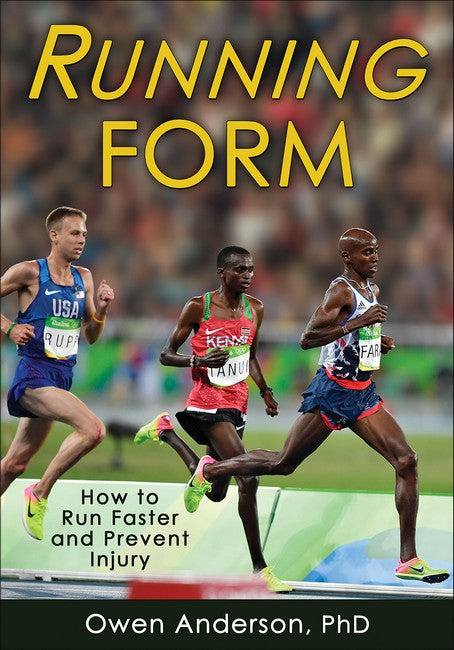Owen Anderson, PhD, has been a regular contributor to Runner's World, Running Times, Shape, Men's Health, Peak Performance, National Geographic Adventure, and Sports Injury Bulletin. He is the author of Running Science (Human Kinetics, 2013). Anderson has written extensively on the topic of strength training for running and developed the neural system of training. This system diminishes the emphasis on mileage and promotes the use of high-quality running and the progression of running-specific strength training to achieve optimal running fitness. Anderson is the founder of Lansing Sports Management, which coaches elite athletes from Kenya and manages their international competitions. He has enjoyed a successful career coaching runners of all levels, including notables such as Benjamin Simatei, the winner of the Park Forest 10-mile race in Chicago, Illinois, and Chemtai Rionotukei, who in 2012 and 2013 had six victories, two course records, and 14 top-four finishes in road races around the United States, including a win at the 2013 Fifth Third River Bank 25K in Grand Rapids, Michigan. Anderson is the race director of the annual Lansing Marathon, Lansing Half Marathon, and Ekiden Relay. In addition, he hosts running camps throughout the United States, including the Lansing Marathon Running Camp in Thetford Center, Vermont. He is also the CEO of Lansing Moves the World, a nonprofit foundation that coordinates three projects, including an after-school program for children age 9 to 14, a tree planting program in east Africa, and a program for families and children victimized by the recent violence in the Tana River Delta district of Kenya.
Description
Introduction. The Importance of Form Part I. Why Form Matters Chapter 1. Traditional Views on Form Chapter 2. Comparing Ordinary and Elite Runners Chapter 3. The Elements of Form Chapter 4. How Form Can Enhance Performance and Prevent Injury Part II. Assessing and Improving Form Chapter 5. Assessing Form Chapter 6. Improving Foot-Strike Patterns Chapter 7. Upgrading Shank Angle Chapter 8. Shortening Stance Time and Increasing Cadence Chapter 9. Improving Body Lean Chapter 10. Promoting Positive Posture Chapter 11. Putting It All Together Part III. Form Factors for Running Success Chapter 12. Running Shoes Chapter 13. Performance, Gender, and Age-Based Differences in Form Chapter 14. Running-Specific Strength Training Chapter 15. Integrating Form Work Into Your Seasonal Training References Index About the Author

